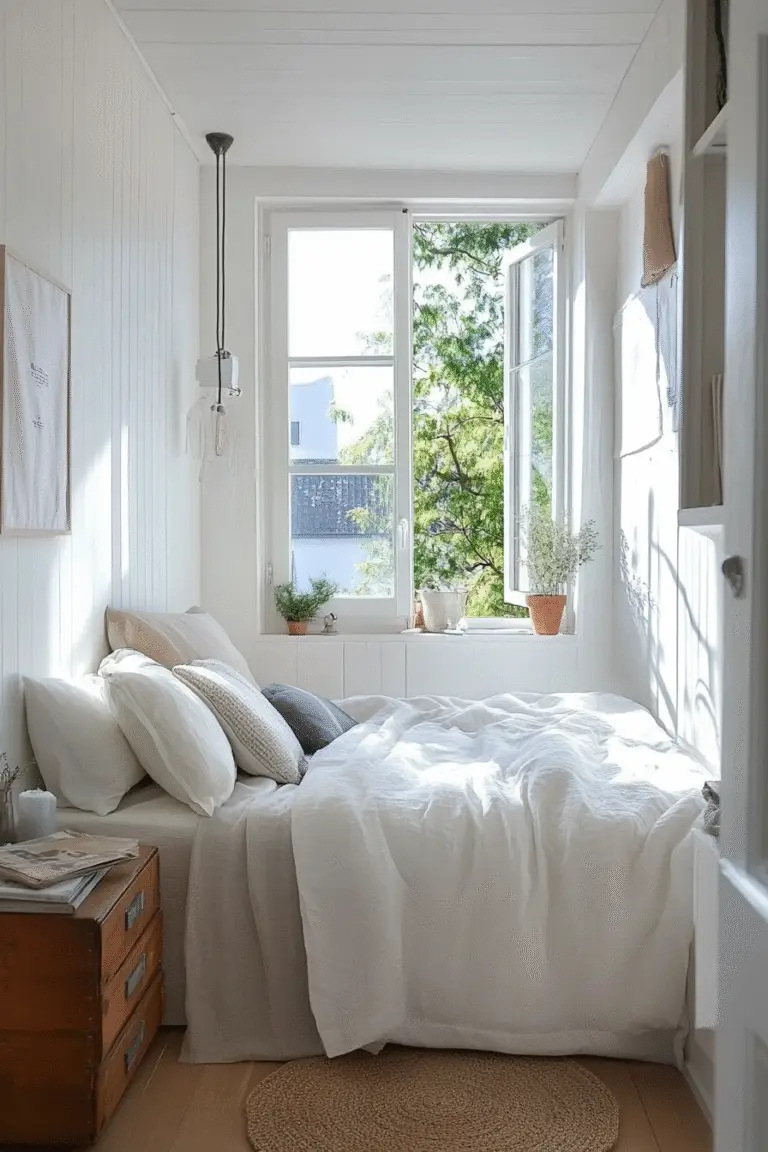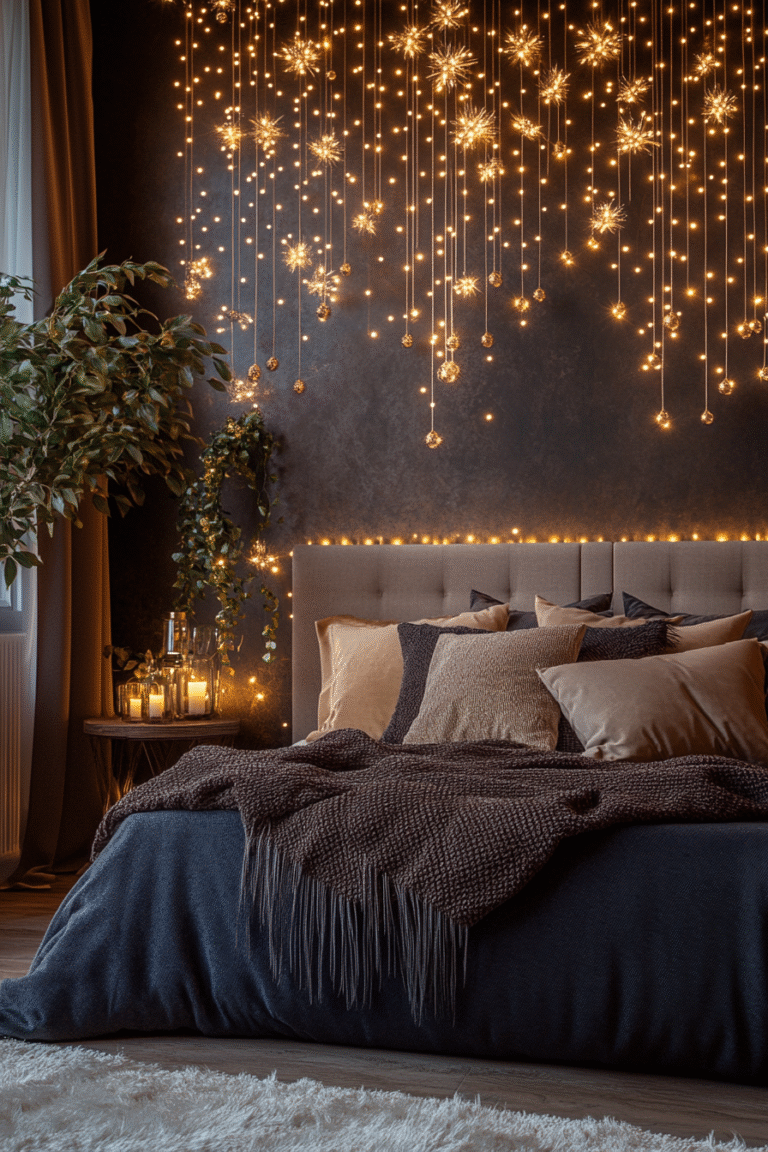
Cozy bedroom paint colors can literally change your life – and I’m not being dramatic here. After spending years helping people transform their bedrooms from chaotic catch-alls into peaceful sanctuaries, I’ve seen firsthand how the right paint color can be the difference between tossing and turning all night and sinking into the most restful sleep of your life.
Here’s the thing nobody tells you about choosing bedroom paint colors: it’s not just about what looks pretty on Pinterest. It’s about understanding how colors affect your nervous system, your circadian rhythm, and your ability to truly unwind after a long day. The wrong color can leave you feeling wired when you should be winding down, while the right paint choices create an instant sense of calm the moment you walk through the door.
I’ve made every paint mistake in the book – from choosing a “cheerful” yellow that made my bedroom feel like a highlighter explosion to a deep red that had me feeling like I was sleeping inside a valentine. But through all those trial-and-error moments (and a lot of primer), I’ve discovered the science-backed secrets to creating a bedroom that doesn’t just look beautiful – it actually helps you sleep better, deeper, and wake up more refreshed.
Cozy Bedroom Paint Colors That Help You Sleep (Yes, Science Says So)
Let me blow your mind with some sleep science that’ll make you look at your bedroom walls completely differently. Your brain doesn’t just “see” colors – it responds to them on a physiological level that directly impacts your sleep quality. Calming bedroom paint colors really do affect how you sleep.
Research from the University of Rochester shows that certain cozy bedroom paint colors can lower your cortisol levels by up to 25% within just 15 minutes of exposure. That’s the stress hormone that keeps you lying awake mentally rehearsing tomorrow’s to-do list instead of drifting off to dreamland.
Blue tones, particularly soft, muted blues, trigger the production of melatonin – your body’s natural sleep hormone. Meanwhile, cozy bedroom paint colors in warm tones like soft grays and gentle beiges activate your parasympathetic nervous system, which is basically your body’s “rest and digest” mode. Think about it, a red wall in your bedroom is loud and in your face. But when it comes to sleep the most soothing bedroom paint colors are what you are aiming for.
Here’s where it gets really interesting: the intensity of the color matters just as much as the hue itself. Bright, saturated colors (even in “calming” shades) can actually stimulate your brain and keep you alert. That’s why those Pinterest-perfect jewel tones might look stunning in photos but leave you feeling restless at bedtime. The most effective cozy bedroom paint colors are muted and soft rather than bright and bold.
The key to choosing relaxing bedroom paint colors is understanding color temperature. Cool undertones (think gentle blues and soft grays) naturally lower your body temperature, which signals to your brain that it’s time to sleep. Warm undertones (like creamy whites and pale blush) create psychological warmth without overstimulation.
When I finally switched from my energizing bright white walls to a soft, warm gray with blue undertones, I noticed the difference immediately. Instead of my mind racing the moment I hit the pillow, I found myself naturally settling into sleepiness. Which begs to be true: peaceful bedroom paint colors matter. One of my favorite tools for getting the undertones exactly right is the Nix Pro Color Sensor – it takes the guesswork out of identifying those subtle undertones that make all the difference in creating truly restful spaces.
Warm Bedroom Paint Colors That Create Instant Coziness
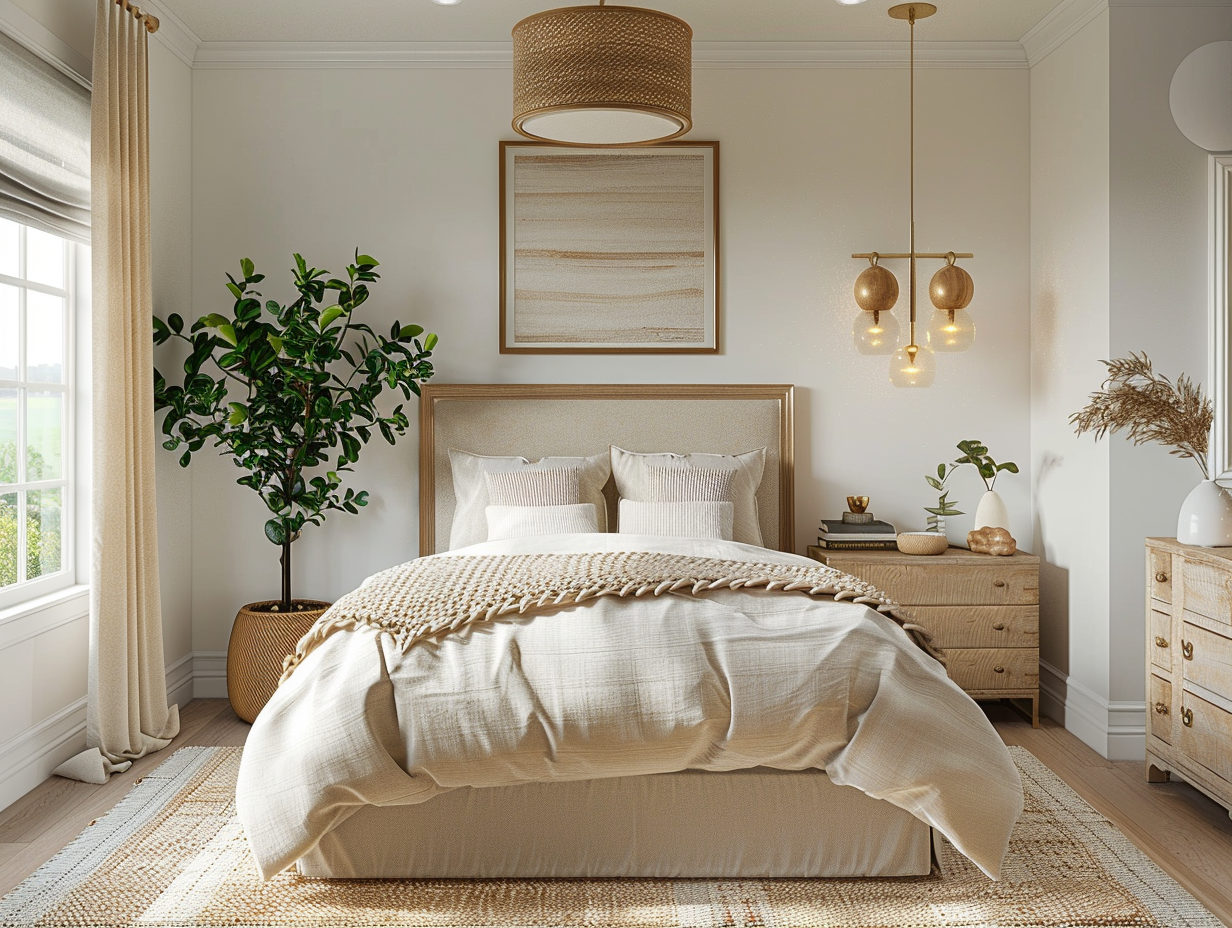
There’s something magical about walking into a room painted in the perfect warm bedroom paint colors – it’s like being wrapped in the world’s softest blanket before you even touch the bed. These colors don’t just look inviting; they actually trigger emotional responses that help you transition from the stress of the day to the peace of evening.
Creamy Whites with Yellow Undertones: Forget stark, sterile white. The coziest bedrooms use creamy whites that have just a whisper of yellow warmth. Think “vanilla ice cream” rather than “hospital wall.” These cozy bedroom paint colors reflect light beautifully during the day but feel soft and enveloping at night. My go-to is Benjamin Moore’s Cloud White – it’s warm enough to feel inviting but clean enough to work with any decor style.
Soft, Mushroom Grays: Gray gets a bad rap for being cold, but the right gray can be incredibly comforting. Look for grays with brown or beige undertones rather than blue or purple ones. These “greige” cozy bedroom paint colors feel sophisticated and calming without any of the sterile feeling that cooler grays can create. Sherwin Williams’ Accessible Beige is technically a beige but reads as the warmest, most inviting gray you’ve ever seen.
Gentle Blush and Dusty Rose: Before you roll your eyes at pink in the bedroom, hear me out. Soft, dusty pinks and gentle blush tones create the most romantic atmosphere while still being sophisticated enough for any age. These cozy bedroom paint colors work especially well in bedrooms with lots of natural light, as they create a gorgeous, warm glow throughout the day.
Warm Sage and Muted Olive: These earthy, botanical shades bring the calming energy of nature indoors while maintaining warmth. They’re particularly perfect if you want your bedroom to feel like a peaceful retreat from city life. These cozy bedroom paint colors pair beautifully with natural textures and plants.
The trick with warm bedroom colors is layering. You want your walls to feel enveloping, not overwhelming. This is where lighting becomes crucial – and why I always recommend investing in quality bedside lighting that can be dimmed. The Brightech Maxwell Swing Arm Wall Sconce is perfect for this because it provides both reading light and ambient lighting, and the warm brass finish complements these cozy paint colors beautifully.
Soothing Bedroom Paint Colors for Deep Relaxation
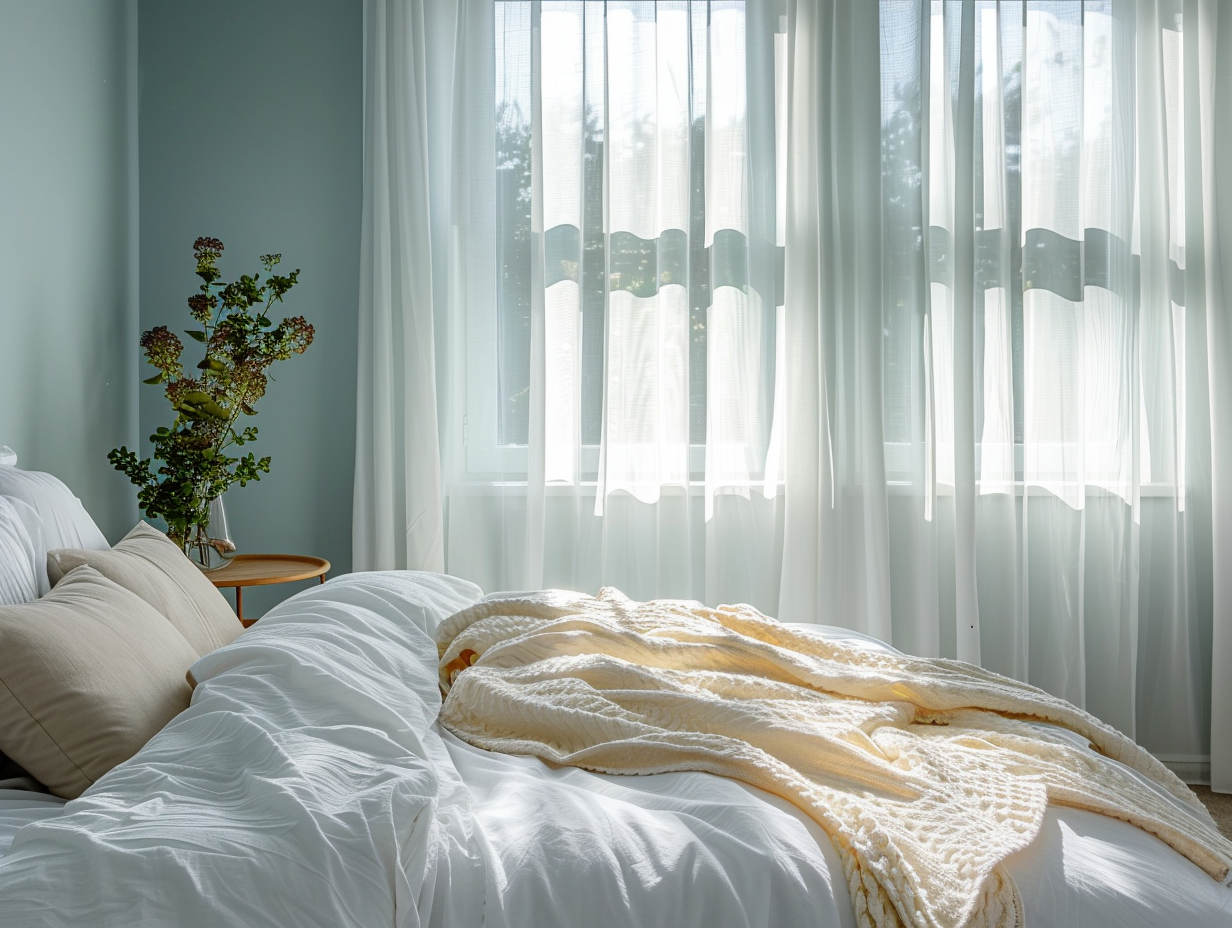
When life feels chaotic and overwhelming, your bedroom should be the one place where you can exhale completely. Soothing bedroom paint colors create that instant sense of “ahhhh” the moment you cross the threshold – like your nervous system automatically downshifts into relaxation mode.
Soft, Powder Blues: There’s science behind why soft blues are so universally calming. These cozy bedroom paint colors literally slow your heart rate and reduce blood pressure. But not all blues are created equal for bedrooms. Skip the bright, primary blues (they’re too stimulating) and go for powder blues, dusty blues, or blue-grays that have a whisper of warmth to prevent them from feeling cold.
Lavender and Soft Purple: Real talk: lavender isn’t just for your grandmother’s guest room anymore. Soft, muted purples and lavenders have been shown to reduce anxiety and promote deeper sleep. The key is choosing cozy bedroom paint colors that are more gray than purple – think “dried lavender” rather than “grape popsicle.”
Gentle Sage Green: Green is the most restful color for the human eye, and sage green specifically creates that spa-like serenity we all crave. This is one of the most versatile cozy bedroom paint colors that works especially well in bedrooms that get a lot of natural light, as it creates a fresh, nature-inspired feeling without being energizing.
Warm, Dove Gray: The perfect gray for a bedroom has warm undertones that prevent it from feeling sterile or sad. Look for grays that have hints of beige, brown, or even the faintest touch of pink. These sophisticated neutrals create a cocoon-like feeling that’s both modern and timeless.
Cloud-Like Off-Whites: Not all whites are stark and clinical. The most soothing off-whites have subtle undertones of gray, beige, or even the faintest hint of blue. These colors create a serene, cloud-like atmosphere that feels clean and fresh without being harsh.
The secret to making soothing bedroom paint colors work is texture. Flat or matte finishes absorb light and create that soft, velvety look that enhances the calming effect. When I’m prepping walls for these gentle colors, I always use a high-quality primer first – the Zinsser Bulls Eye 1-2-3 Primer ensures that your final color looks exactly like it should and doesn’t get muddy or uneven. Trust me, there’s nothing soothing about paint that looks patchy or inconsistent.
Best Bedroom Paint Colors for Different Room Sizes and Lighting
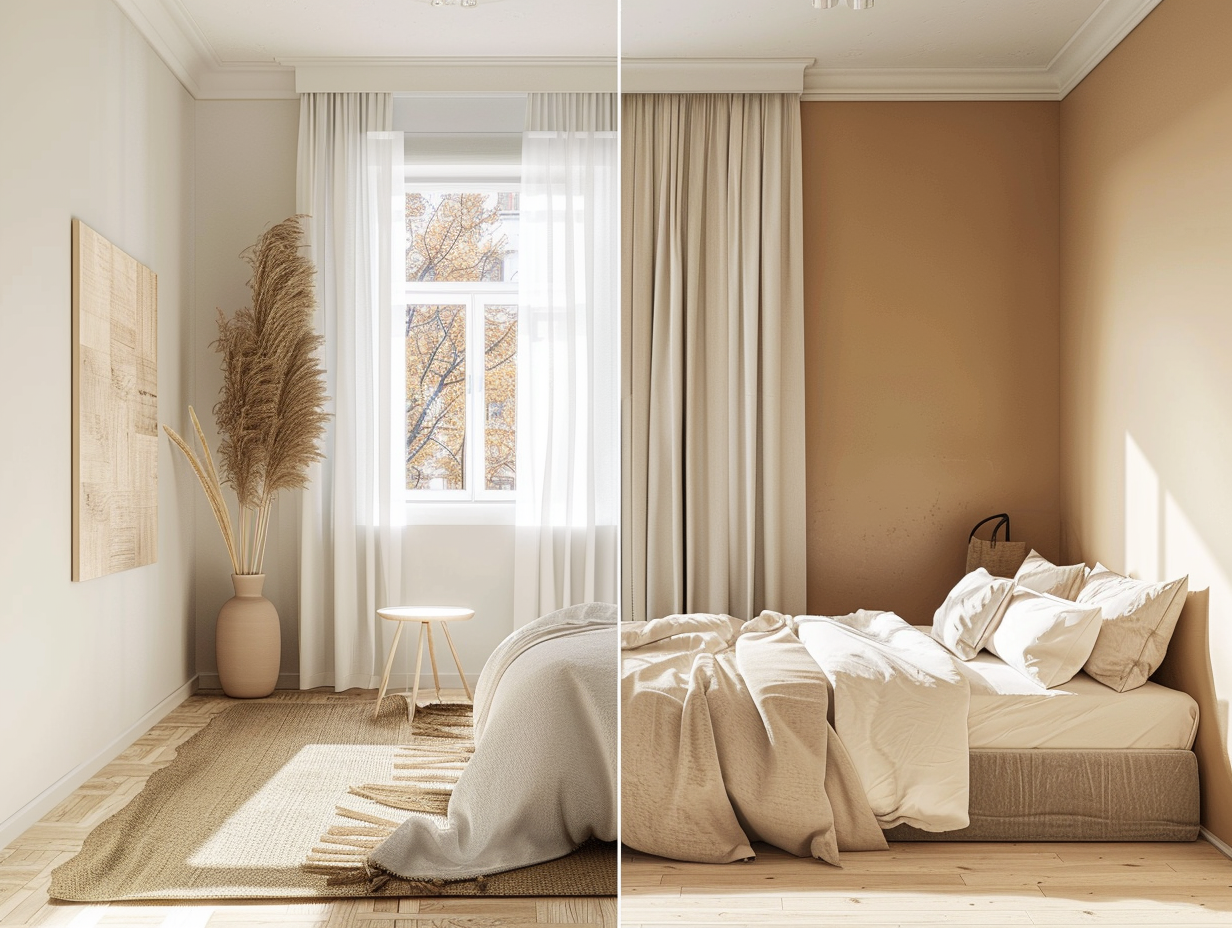
Here’s something most paint articles won’t tell you: the “best” cozy bedroom paint colors change dramatically based on your room’s size, layout, and lighting situation. What works beautifully in a sun-drenched master suite can make a small, north-facing bedroom feel like a cave.
Small Bedroom Paint Colors That Create Space: Small bedrooms need colors that breathe. Light, warm neutrals are your best friends here because they reflect light and create the illusion of more space. But “light” doesn’t mean “boring.” Consider soft, warm whites like Benjamin Moore’s Simply White or gentle grays with warm undertones like Sherwin Williams’ Repose Gray. These cozy bedroom paint colors will make your small space feel intimate rather than cramped and claustrophobic.
Pro tip for small bedrooms: paint your ceiling the same color as your walls, but in a flat finish. This eliminates the visual boundary between wall and ceiling, making the room feel taller and more spacious.
Large Bedroom Paint Colors That Feel Intimate: Big bedrooms can actually be harder to make inviting because they risk feeling cold and impersonal. This is where you can go slightly deeper with your color choices. Rich, warm neutrals like mushroom grays, soft taupes, or even gentle charcoal can create that enveloping, intimate feeling that makes a large space feel like a true retreat. These deeper cozy bedroom paint colors work beautifully in spacious rooms.
North-Facing Bedrooms: Combating Cool Light: North-facing rooms get cooler, bluer light throughout the day, which can make even warm paint colors look gray and sad. Combat this by choosing cozy bedroom paint colors with strong warm undertones – think creamy whites with yellow or peach undertones, warm grays with brown bases, or soft beiges that have enough yellow to counteract the cool light.
South-Facing Bedrooms: Balancing Bright Light: Rooms with lots of southern exposure get intense, warm light that can make colors look more yellow or orange than intended. Here, you can get away with cooler undertones and even embrace some of those beautiful blue-grays and soft lavenders that might feel too cold in other orientations. These cozy bedroom paint colors with cooler undertones will be perfectly balanced by the warm southern light.
East and West-Facing Bedrooms: Managing Color Changes: These rooms are the trickiest because the light changes dramatically throughout the day. East-facing rooms get cool morning light and warm afternoon light, while west-facing rooms are the opposite. Choose colors that look good in both cool and warm light – think balanced neutrals without strong undertones in either direction.
When I’m helping someone choose relaxing bedroom paint colors for tricky lighting situations, I always recommend testing colors at different times of day. The Benjamin Moore Color Preview Sample lets you test multiple colors on your actual walls before committing to gallons of paint. It’s saved me from so many expensive mistakes over the years.
For more ideas on creating a truly restful space, check out our guide to cozy bedroom decor ideas that create a peaceful personal retreat.
Bedroom Paint Colors That Promote Better Sleep Quality
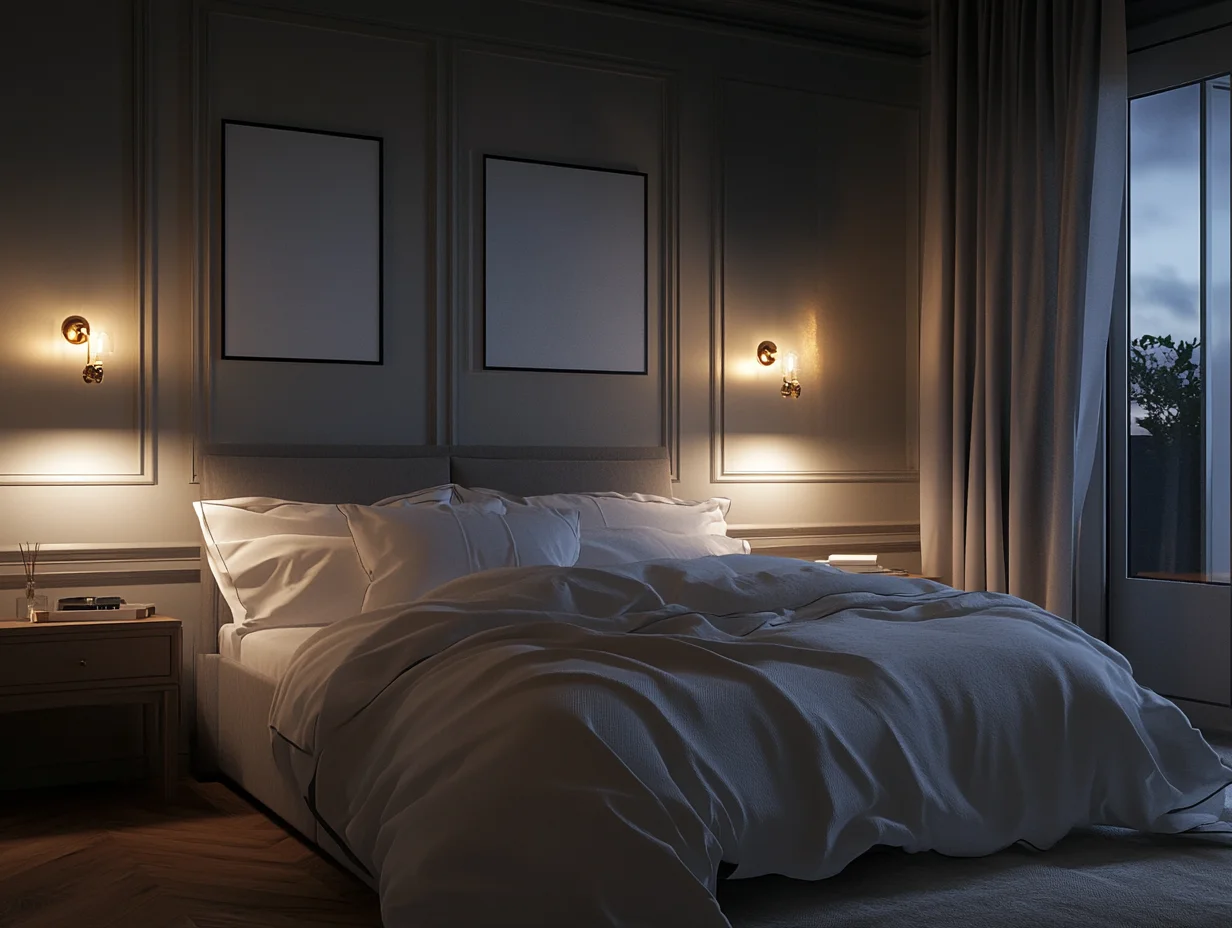
Let’s get nerdy about the neuroscience of sleep and color for a minute, because this is where choosing the right cozy bedroom paint colors goes from “nice to have” to “life-changing necessity.”
Your brain’s pineal gland – the tiny organ responsible for producing melatonin – is incredibly sensitive to environmental cues, including color. Studies from Harvard Medical School show that exposure to certain colors in the hour before bedtime can either support or sabotage your natural sleep cycle.
The Sleep-Promoting Color Palette
Blue remains the undisputed champion of sleep-inducing colors, but the shade matters enormously. Soft, muted blues with gray undertones (think “cloudy sky” rather than “tropical ocean”) activate the production of melatonin while simultaneously lowering your heart rate and blood pressure. These are among the most effective cozy bedroom paint colors for promoting rest. The British hotel chain Travelodge conducted a study of 2,000 homes and found that people with blue bedrooms got an average of 7 hours and 52 minutes of sleep per night – nearly an hour more than those with purple bedrooms (the worst performer at 5 hours and 56 minutes).
Soft grays, particularly those with cool undertones, work similarly to blues in promoting sleep. They create a sense of calm neutrality that allows your mind to stop processing visual stimulation and begin the transition to sleep mode. These neutral cozy bedroom paint colors are perfect for creating a serene environment.
Gentle greens, especially sage and eucalyptus tones, have been shown to reduce anxiety and promote feelings of renewal and restoration. These cozy bedroom paint colors work by mimicking the calming effects of nature, triggering the same relaxation response you might feel in a peaceful forest or garden.
Colors to Avoid for Quality Sleep
Red is the absolute worst choice for bedroom walls if sleep quality is your goal. It increases heart rate, blood pressure, and brain activity – essentially putting your body in fight-or-flight mode when you need rest-and-digest mode. Even soft pinks can be too stimulating for some sensitive sleepers.
Bright yellows, while cheerful during the day, can interfere with melatonin production and keep your brain in “daytime” mode even after dark. Orange has similar energizing effects and can make it difficult to wind down mentally.
Deep purples and rich jewel tones might look luxurious, but they can create a sense of drama and intensity that works against the peaceful atmosphere you want for quality sleep.
The Temperature Factor
This is crucial: warm colors (those with yellow, orange, or red undertones) can actually raise your body temperature slightly, which works against your natural sleep cycle. Your body temperature needs to drop for quality sleep to occur, which is why cool or neutral cozy bedroom paint colors often promote better rest than their warmer counterparts.
Creating the perfect sleep environment isn’t just about wall color – it’s about the entire sensory experience. I’ve found that blackout curtains are essential for maintaining that peaceful atmosphere, especially if you’ve chosen lighter paint colors. The NICETOWN Blackout Curtain Panels come in colors that complement every paint shade I’ve mentioned and create that cave-like darkness that promotes deep, restorative sleep.
How to Test Paint Colors Before Committing

This is where I see people make the most expensive mistakes, and honestly, it breaks my heart every time. Choosing cozy bedroom paint colors based on tiny paint chips or online photos is like buying a car based on a keychain – you’re missing 90% of the crucial information you need to make a good decision.
The Paint Chip Lie: Those little paint chips at the hardware store are lying to you. Well, not intentionally, but they’re showing you colors under fluorescent store lighting that bears no resemblance to the lighting in your actual bedroom. Plus, colors look completely different when they’re covering an entire wall versus displayed on a 2-inch square.
The Right Way to Test Colors: Get sample pints – not peel-and-stick samples, actual paint samples. Paint large swatches (at least 2 feet by 2 feet) on different walls of your bedroom. This lets you see how the cozy bedroom paint colors look with morning light, afternoon light, evening light, and artificial light.
Live with these swatches for at least a week. I cannot stress this enough. Colors that seem perfect in afternoon sunlight might look gray and depressing on a cloudy morning. Cozy bedroom paint colors that feel inviting in evening lamplight might feel overwhelming in bright daylight.
Test Adjacent to Your Fixed Elements: Paint your swatches right next to elements you can’t change – your flooring, furniture, or built-in features. A color that looks beautiful in isolation might clash horribly with your carpet or look muddy next to your wood trim.
Consider the Sheen: The finish matters almost as much as the color itself. Flat or matte finishes create that soft, velvety look that enhances coziness, but they’re harder to clean. Eggshell has a subtle sheen that’s still calming but more practical for bedrooms where you might need to wipe down walls occasionally.
Digital Tools for Color Selection: Technology has gotten pretty amazing for paint selection. Apps like Sherwin Williams’ ColorSnap and Benjamin Moore’s Color Portfolio let you upload photos of your room and virtually “try on” different colors. While not perfect, they’re great for narrowing down options before you buy sample pints.
For the most accurate color testing, I swear by the Color Muse Paint Color Matching Device. It can capture the exact color of anything in your room – from your favorite throw pillow to a piece of artwork – and suggest coordinating paint colors. It’s like having a color consultant in your pocket.
The Lighting Reality Check: Your bedroom probably has multiple light sources: natural light from windows, overhead lighting, bedside lamps, maybe even candles. Test your color swatches under all these different lighting conditions. A color that looks perfect under your warm bedside lamp might look completely different under your overhead fixture.
Common Paint Color Mistakes That Ruin Sleep
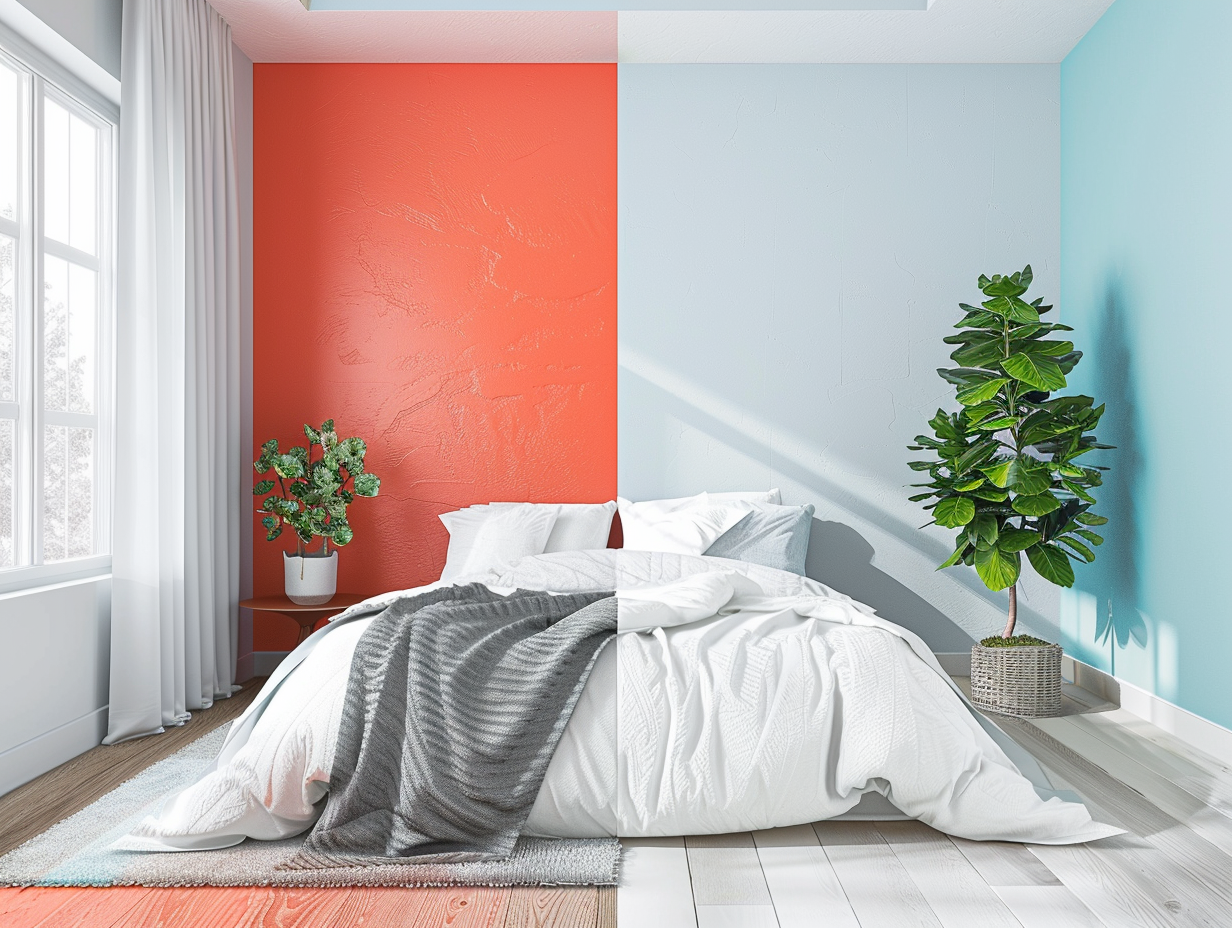
After years of helping people fix their bedroom paint disasters, I’ve seen these mistakes over and over again. The good news? They’re all totally fixable. The even better news? I’m going to help you avoid them entirely.
Mistake #1: Choosing Colors in the Wrong Lighting: This is the big one. Making paint decisions under store lighting or based on online photos is like shopping for sunglasses in the dark. I’ve seen beautiful, calming bedroom paint colors turn into complete disasters because someone didn’t account for how their actual bedroom lighting would affect the color. The most gorgeous cozy bedroom paint colors can look completely different under various lighting conditions.
The fix: Always test colors in your actual space, under your actual lighting, at different times of day. What looks like a soft gray in afternoon sunlight might look stark and cold under your bedside lamp at night.
Mistake #2: Ignoring Undertones: This one is sneaky and causes more bedroom paint regrets than any other factor. You think you’re choosing a neutral beige, but those yellow undertones make your room feel like the inside of a banana. You pick what looks like a soft gray, but the purple undertones make everything feel cold and sterile. When selecting cozy bedroom paint colors, understanding undertones is absolutely crucial.
Undertones become amplified when you put a color on an entire wall, especially in the soft lighting of a bedroom. A color with pink undertones that looks neutral on a paint chip can make your whole room feel like you’re sleeping inside a seashell.
Mistake #3: Going Too Dark Without Enough Light: Dark, moody bedroom colors are having a moment on social media, and I get the appeal. There’s something undeniably welcoming about a deep, rich wall color. But here’s the reality: dark colors need a lot of light to work properly. Without adequate lighting, your bedroom turns into a cave that feels depressing rather than restful. Even the most beautiful cozy bedroom paint colors in deep tones require proper illumination.
If you love the idea of deeper colors, make sure you have multiple light sources and consider using the dark color on just one accent wall rather than the entire room.
Mistake #4: Matching Everything Too Perfectly: Pinterest has convinced us that everything in a room needs to “match,” but perfectly coordinated rooms can actually feel sterile and unwelcoming. Your bedroom should feel collected and personal, not like a hotel room or a showroom.
Instead of matching your paint color exactly to your bedding or furniture, choose colors that complement each other. A little variation creates visual interest and makes the space feel more lived-in.
Mistake #5: Forgetting About Color Psychology: Some colors just aren’t bedroom colors, no matter how much you love them. Bright oranges and reds are energizing and exciting – great for a workout room or kitchen, terrible for a space where you want to wind down and relax. When choosing cozy bedroom paint colors, it’s essential to consider how different hues affect your mental state and sleep quality.
Even colors that seem “close enough” can have very different psychological effects. A bright, clear blue might look similar to a soft, muted blue, but the bright version will stimulate your brain while the muted version will calm it.
The biggest mistake I see people make is not investing in proper paint tools. Cheap brushes and rollers can make even the most beautiful color look streaky and unprofessional. The Purdy White Dove Brush Set might cost more upfront, but it’ll give you that smooth, professional finish that makes any color look its absolute best. Trust me, when you’re staring at these walls every night, you want them to look flawless.
Creating a Cohesive Color Scheme for Ultimate Coziness
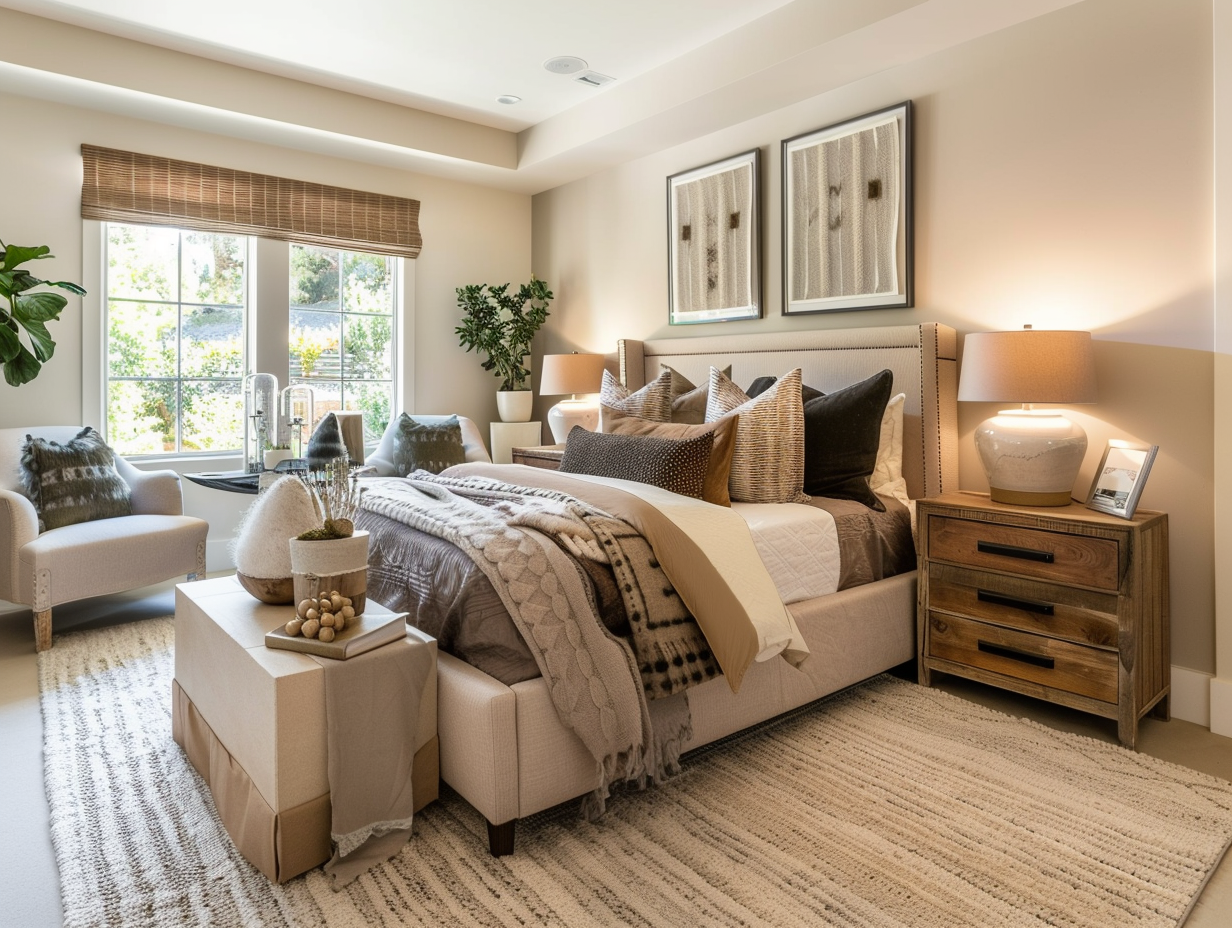
Here’s where we take your perfectly chosen paint colors and turn them into a complete, Instagram-worthy retreat that actually helps you sleep better. Because here’s the thing: even the most beautiful wall color can fall flat if it’s not supported by a thoughtful, cohesive color scheme.
The 60-30-10 Rule for Bedroom Colors: Interior designers swear by this formula, and it works perfectly for creating bedrooms that feel balanced and intentional. Your main wall color should make up about 60% of the visual space in your room. Your secondary color (maybe a deeper shade for an accent wall, or the color of your major furniture pieces) should account for about 30%. And your accent color – the fun pops of color in pillows, artwork, or accessories – should be about 10%.
This formula prevents your room from feeling chaotic while still allowing for personality and visual interest.
Layering Neutrals for Depth: The coziest bedrooms use multiple shades of the same color family to create depth and richness. If your walls are a soft gray, consider bed linens in a slightly deeper gray, curtains in a warm taupe, and accent pillows in cream or soft white. This creates a sophisticated, layered look that feels intentional and pulled-together. The best cozy bedroom paint colors work beautifully as part of a monochromatic scheme.
Bringing in Natural Elements: Nothing makes a bedroom feel cozier than bringing in elements from nature. Warm wood tones, natural fiber rugs, and plants (if your room gets enough light) all complement peaceful bedroom paint colors beautifully. These organic elements prevent even the most perfectly painted room from feeling sterile or cold.
Texture is Everything: In a room painted in calming, neutral colors, texture becomes your secret weapon for creating visual interest and coziness. Think chunky knit throws, linen curtains, a jute rug, or even textured wallpaper on an accent wall. These elements add warmth and personality without disrupting the peaceful color palette you’ve worked so hard to create.
Metallic Accents for Warmth: The right metallic accents can elevate your bedroom from “nice” to “luxurious retreat.” Warm metals like brass, copper, and aged gold complement most bedroom paint colors beautifully and add that hint of sophistication that makes a space feel special. Cool metals like chrome and silver work better with cooler paint colors but can feel too sterile for a welcoming bedroom.
Lighting as Part of Your Color Scheme: Your lighting choices are just as important as your paint color when it comes to creating that perfect atmosphere. Warm, soft lighting enhances the peaceful feeling of relaxing bedroom paint colors, while harsh, bright lighting can make even the most beautiful paint job feel cold and unwelcoming.
Layer different types of lighting: ambient lighting for overall illumination, task lighting for reading, and accent lighting to create mood and highlight beautiful elements in your room.
The perfect finishing touch for any bedroom color scheme is luxurious bedding that ties everything together. I’m obsessed with the Parachute Percale Sheet Set because the quality is incredible and they come in colors that complement every paint shade I’ve recommended. There’s something about crisp, high-quality sheets in the perfect coordinating color that makes you feel like you’re staying in a five-star hotel every single night.
Maintenance and Touch-Up Tips for Long-Lasting Color
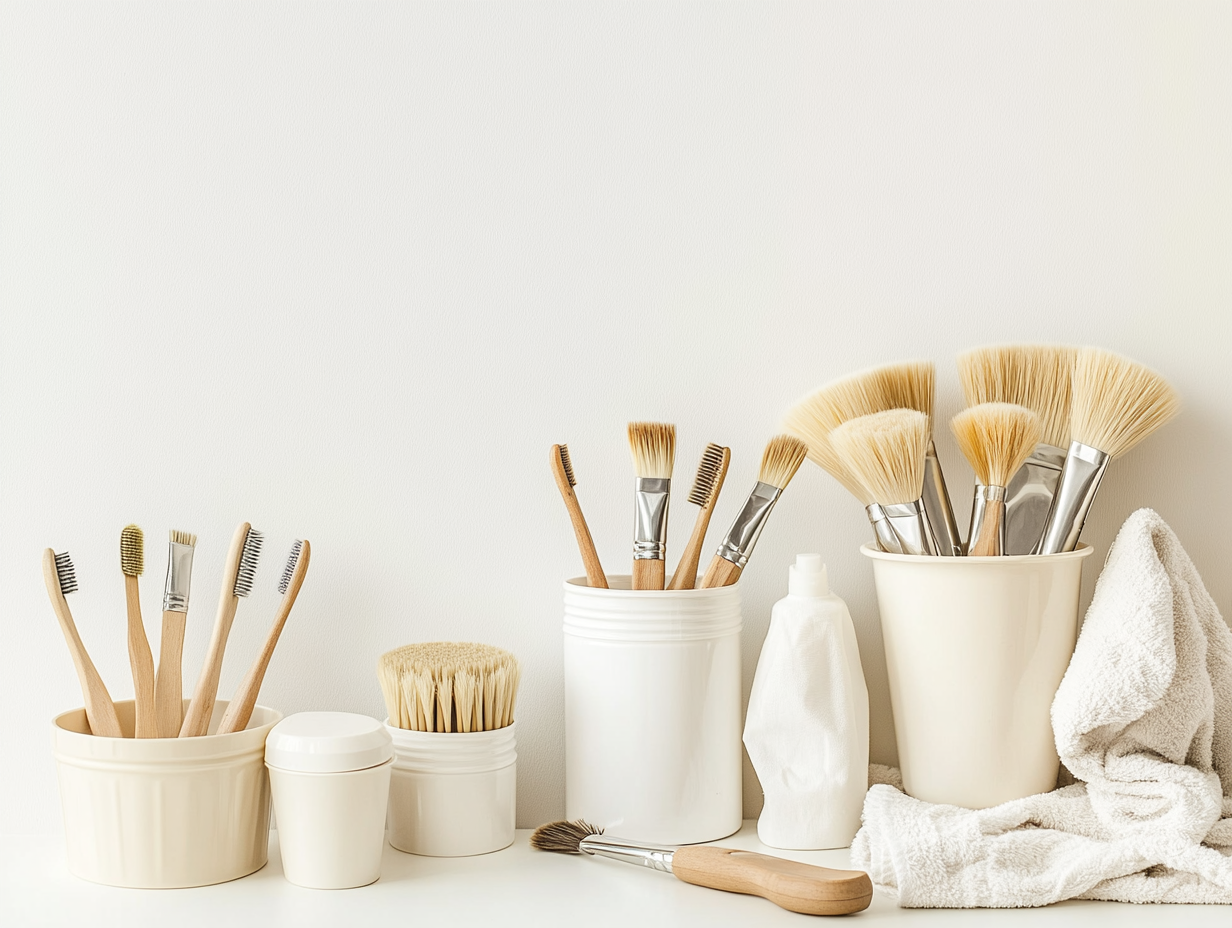
Let’s talk about something nobody mentions when they’re showing off their gorgeous bedroom makeovers: keeping those beautiful, calming paint colors looking fresh and perfect over time. Because what good is the most soothing paint color in the world if it’s covered in scuffs, fading, or touch-up spots that don’t quite match?
Protecting Your Investment: Quality paint is an investment, and like any investment, it needs proper care to maintain its value. The good news is that protecting your bedroom walls is much easier than protecting, say, kitchen or bathroom walls, since bedrooms typically see less wear and tear.
Start with the right finish. For bedrooms, I almost always recommend eggshell or satin finishes rather than flat paint. Yes, flat paint has that beautiful, velvety look that photographs so well on Instagram, but it’s nearly impossible to clean without leaving marks. Eggshell and satin finishes still look sophisticated and calming, but they can handle the occasional cleaning without showing water marks or scrub marks.
The Art of Touch-Ups: Here’s a professional secret: even perfect touch-ups are noticeable if you don’t do them right. The key is keeping some original paint for touch-ups (stored properly – more on that in a minute) and understanding that touching up isn’t just about slapping paint on a scuff mark.
First, clean the area gently with a slightly damp cloth and let it dry completely. Then, use a small brush or foam applicator to apply the paint in thin layers, feathering the edges so there’s no obvious boundary between the new paint and the old paint. Sometimes you need to paint a larger area – like from corner to corner – to make the touch-up truly invisible.
Proper Paint Storage: If you want your leftover paint to be useful for touch-ups months or years later, you need to store it properly. Transfer leftover paint to smaller containers (mason jars work great) to minimize air exposure. Label everything clearly with the color name, finish, and date. Store in a cool, dry place where temperatures don’t fluctuate dramatically.
When to Repaint vs. Touch Up: Sometimes touch-ups just aren’t enough. If your bedroom gets a lot of natural light, you might notice fading over time, especially with certain colors. If you’re seeing fading, chalking, or if the paint just doesn’t look as rich and beautiful as it used to, it’s time for a fresh coat rather than endless touch-ups.
Most high-quality interior paints will look good for 5-7 years in a bedroom, longer if the room doesn’t get a lot of direct sunlight and you’ve taken good care of the walls.
Seasonal Color Refreshes: One of my favorite tricks for keeping a bedroom feeling fresh is switching out accessories with the seasons while keeping the main paint color consistent. Your soft gray walls can feel different throughout the year with seasonal changes to bedding, throw pillows, and artwork.
For fall, add warmer accent colors like deep burgundy or rich gold. Winter calls for textures and perhaps some deeper blues or forest greens. Spring is perfect for fresh whites and soft pastels. Summer can handle brighter accents and lighter, airier accessories.
Cleaning and Maintenance Schedule: Your beautiful bedroom paint will last much longer with regular, gentle maintenance. Dust walls monthly with a microfiber cloth or vacuum with a soft brush attachment. Address scuffs and marks immediately rather than letting them set in. Keep the room at a consistent temperature and humidity level to prevent paint from cracking or peeling.
For the best results in maintaining your painted walls, I recommend keeping a Magic Eraser handy for gentle spot cleaning. They’re amazing at removing scuffs and marks without damaging the paint finish, and they work especially well on the eggshell and satin finishes I recommend for bedrooms.
Conclusion: Your Journey to Better Sleep Starts with Color
We’ve covered a lot of ground together, and if you’re feeling a little overwhelmed by all the options and considerations, take a deep breath. Creating the perfect bedroom with the right paint colors doesn’t have to be complicated or stressful.
Here’s what I want you to remember: the best bedroom paint color is the one that makes YOU feel calm, peaceful, and ready for restorative sleep. All the science and psychology in the world doesn’t matter if you don’t love living with your choice.
Start with understanding your room’s lighting and size constraints, then narrow down your options to colors that genuinely appeal to you within those parameters. Test your top choices properly – living with large swatches for at least a week. Trust your instincts about what feels peaceful and just right to you personally.
Remember that creating a truly restful bedroom is about more than just wall color. It’s about layering in the right lighting, choosing comfortable and beautiful textiles, and creating an environment that supports your sleep and relaxation goals. Your paint color is the foundation, but it’s only the beginning of creating your perfect sleep sanctuary.
The investment you make in getting your cozy bedroom paint colors right will pay dividends every single night for years to come. Better sleep means better health, better mood, better relationships, and better performance in every area of your life. It’s not just about having a pretty room – it’s about creating a space that truly serves your wellbeing.
Your bedroom should be your refuge, your retreat, your safe haven from the chaos of daily life. With the right paint foundation, you’re well on your way to creating that perfect sanctuary.
Sweet dreams start with the perfect paint choice – and now you have everything you need to make it happen.
Ready to transform another space in your home? Check out our Complete Guide to Tiny Bedroom Ideas That Actually Make Your Space Feel Bigger for more space-maximizing tips that work beautifully with these calming color choices.

